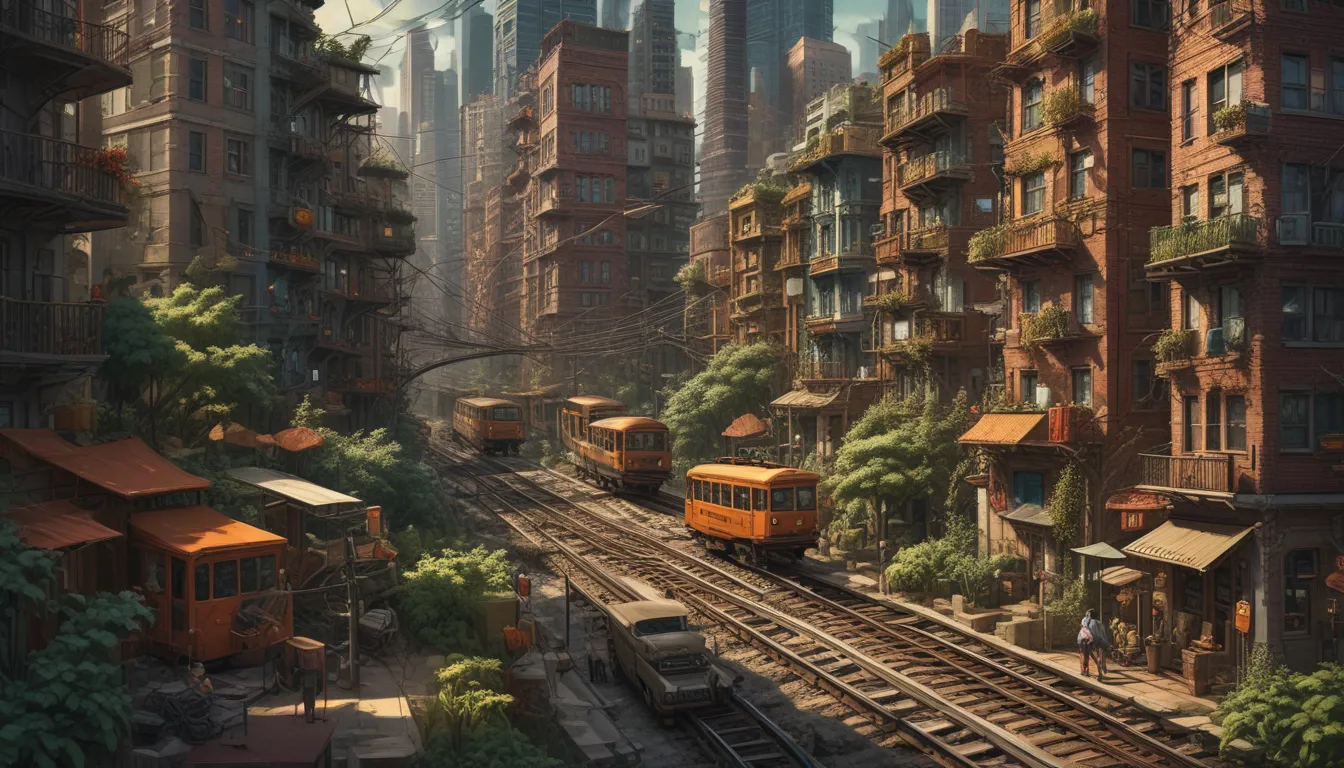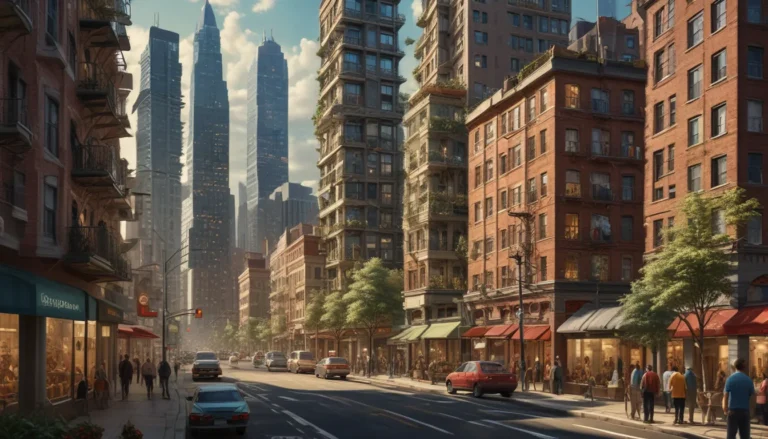A Note About Images: The images used in our articles are for illustration purposes only and may not exactly match the content. They are meant to engage readers, but the text should be relied upon for accurate information.
In today’s rapidly evolving world, urbanization and infrastructure development play a crucial role in shaping the way we live, work, and interact with our surroundings. The growth of cities and towns has led to a myriad of opportunities and challenges, highlighting the importance of sustainable urban planning and robust infrastructure. From mind-boggling statistics on population growth to remarkable examples of engineering feats, urbanization and infrastructure have significantly impacted society and the environment.
The Rise of Urbanization: A Global Phenomenon
- Nearly 55% of the world’s population live in urban areas. This rapid increase in urbanization reflects a shift towards cities as centers of economic opportunities, improved infrastructure, and a better quality of life.
- Tokyo is the most populous city in the world, with over 37 million residents. Known for its efficient public transportation system and vibrant culture, Tokyo is a bustling metropolis at the forefront of urban development.
The Environmental Impact of Urbanization
- Urban areas contribute over 70% of global greenhouse gas emissions, leading to climate change and resource depletion. Sustainable urban planning is essential to mitigate these harmful effects.
- The urban heat island effect is a phenomenon caused by urbanization, resulting in higher temperatures in densely built-up areas. This effect highlights the importance of green spaces and energy-efficient practices in urban planning.
Infrastructure: The Backbone of Urban Development
- The Great Wall of China is a remarkable example of infrastructure, stretching over 13,000 miles to protect China from invasions. This ancient structure showcases the engineering prowess of civilizations.
- New York City has one of the oldest subway systems in the world, established in 1904. With a vast network of routes, the NYC subway plays a vital role in connecting millions of commuters daily.
Challenges and Opportunities in Urban Development
- Informal settlements, or slums, are prevalent in many urban areas, housing around 1 billion people without basic amenities. Improving living conditions in these settlements is a significant challenge for urban planners.
- The United Nations projects that 68% of the world’s population will reside in urban areas by 2050, posing challenges and opportunities for sustainable urban development.
Innovation and Transformation in Urban Centers
- Singapore is known for its efficient urban planning and infrastructure, transforming from a fishing village to a global financial hub. With world-class amenities and sustainable green spaces, Singapore sets a benchmark for urban development.
- The completion of the Panama Canal in 1914 revolutionized global trade and transportation, reducing shipping time between oceans and enhancing international connectivity.
The Role of Infrastructure in Economic Development
- Urban areas generate more than 80% of global GDP, highlighting the economic significance of cities. Thriving urban economies drive global growth and development.
- The construction industry plays a significant role in urban development, creating jobs, shaping skylines, and ensuring the functionality of urban infrastructure.
Technology and Urban Infrastructure
- Seoul, South Korea, boasts the fastest internet speed globally, with an average speed of 26.1 Mbps. The city’s advanced digital infrastructure positions it as a leader in technology and innovation.
- Technology plays a vital role in modern urban infrastructure, enabling smart solutions for energy management, transportation systems, and public services.
Sustainable Urban Planning for the Future
- Rapid urbanization puts pressure on existing infrastructure and services, leading to challenges like traffic congestion and inadequate housing. Sustainable urban planning is essential for creating resilient and inclusive cities.
- As people from diverse backgrounds come together, urban areas foster cultural diversity, tolerance, and cosmopolitanism, creating vibrant and inclusive communities.
Conclusion: Embracing the Future of Urbanization and Infrastructure
Urbanization and infrastructure are integral to modern society, shaping the landscape of our cities and towns. With a focus on sustainable development and innovation, urban areas can thrive as centers of diversity, opportunity, and growth. From ancient wonders to modern marvels, urbanization and infrastructure have transformed the world we live in, paving the way for a brighter future.
FAQs: Your Guide to Urbanization and Infrastructure
- What is urbanization? Urbanization is the process of people moving to urban areas, leading to the growth of cities and towns.
- How does urbanization impact society? Urbanization contributes to economic growth, cultural diversity, and technological advancements while presenting challenges related to housing, transportation, and sustainability.
- Why is infrastructure important for urbanization? Infrastructure supports the efficient functioning of cities and improves residents’ quality of life by providing essential services.
- How does urbanization impact the environment? Urbanization can lead to pollution, habitat destruction, and resource depletion, but sustainable practices can mitigate these effects.
- What are some examples of urban infrastructure? Urban infrastructure includes transportation systems, water supply networks, energy grids, and communication networks.
- What are the challenges of urbanization? Challenges of urbanization include overcrowding, inadequate housing, and strained resources and services.
- How does infrastructure contribute to economic development? Infrastructure attracts businesses, facilitates trade, and improves efficiency, driving economic growth.
- What is the role of technology in urban infrastructure? Technology enables smart solutions for energy management, transportation, and public services in urban areas.
- How can we ensure sustainable urbanization? Sustainable urbanization requires careful planning, energy-efficient buildings, public transportation, and sustainable waste management.
- How is urban infrastructure financed? Urban infrastructure is funded through public funding, private investments, and public-private partnerships.
- What is the future of urbanization and infrastructure? The future involves continued growth, innovation, and a focus on sustainable development and resilience.
In conclusion, urbanization and infrastructure are dynamic forces that shape our modern world, presenting both challenges and opportunities for sustainable development. By embracing innovation and sustainability in urban planning, we can create livable, resilient, and inclusive cities for generations to come. As we delve into the fascinating realm of urbanization and infrastructure, let’s explore the endless possibilities and transformative impact they hold for our future.






